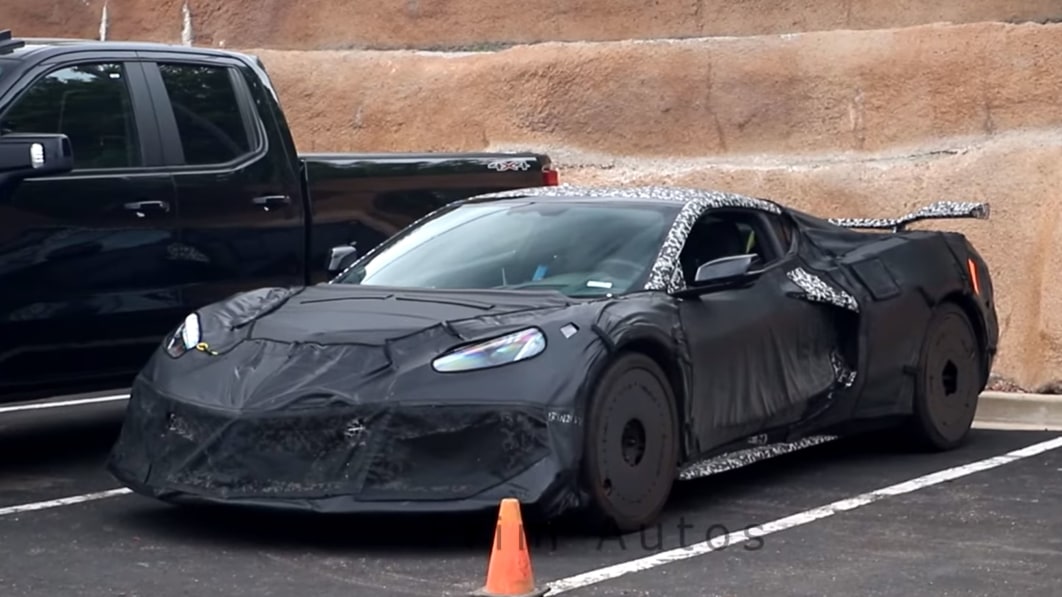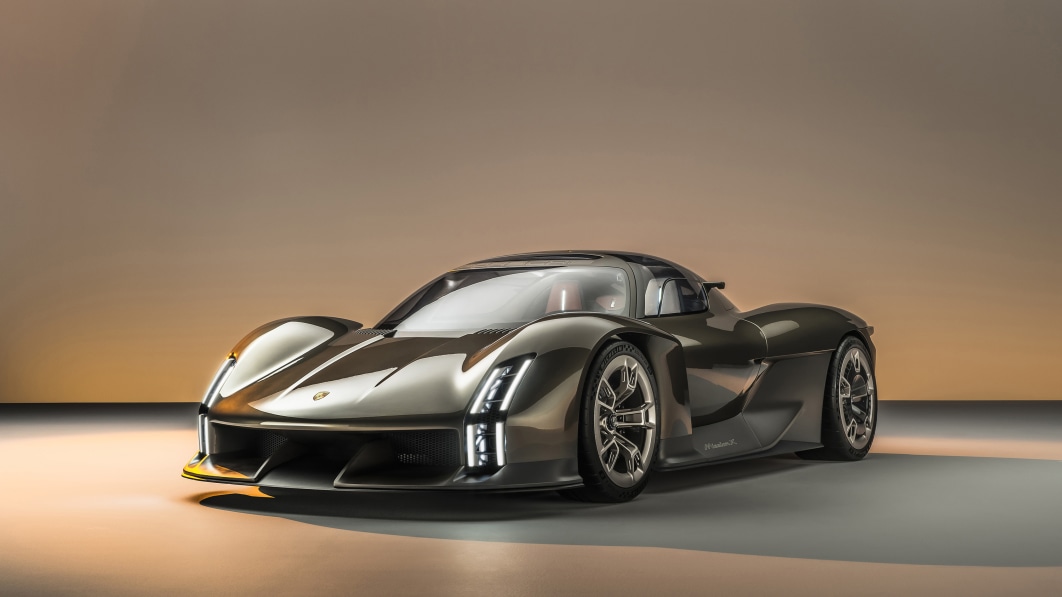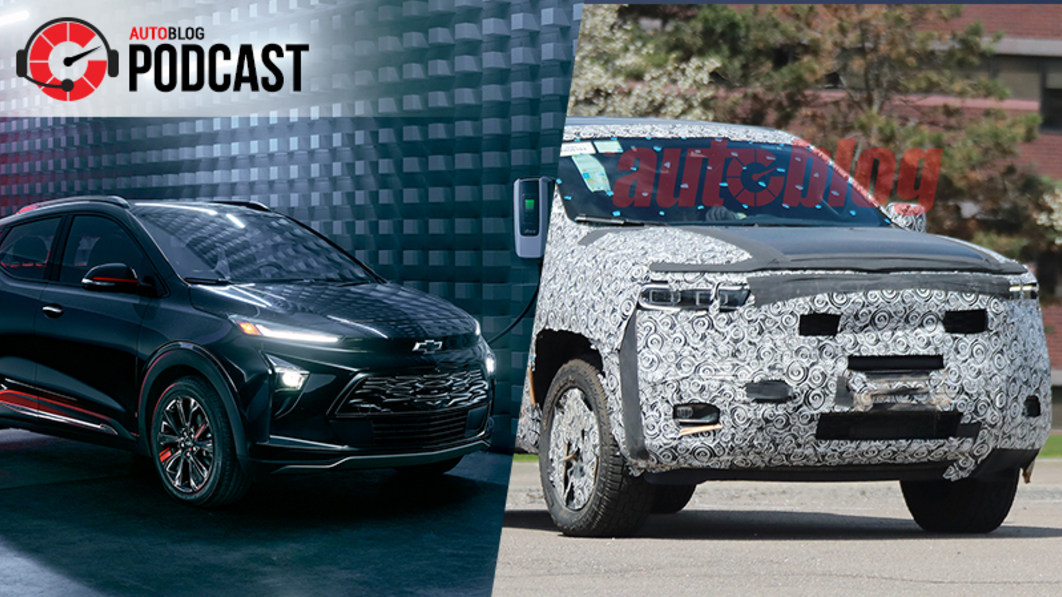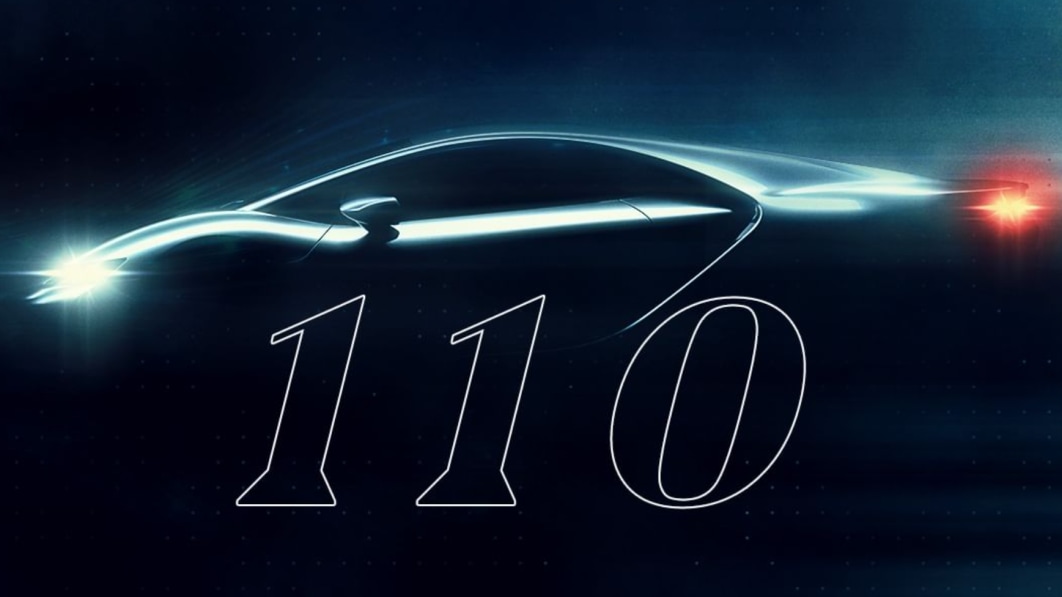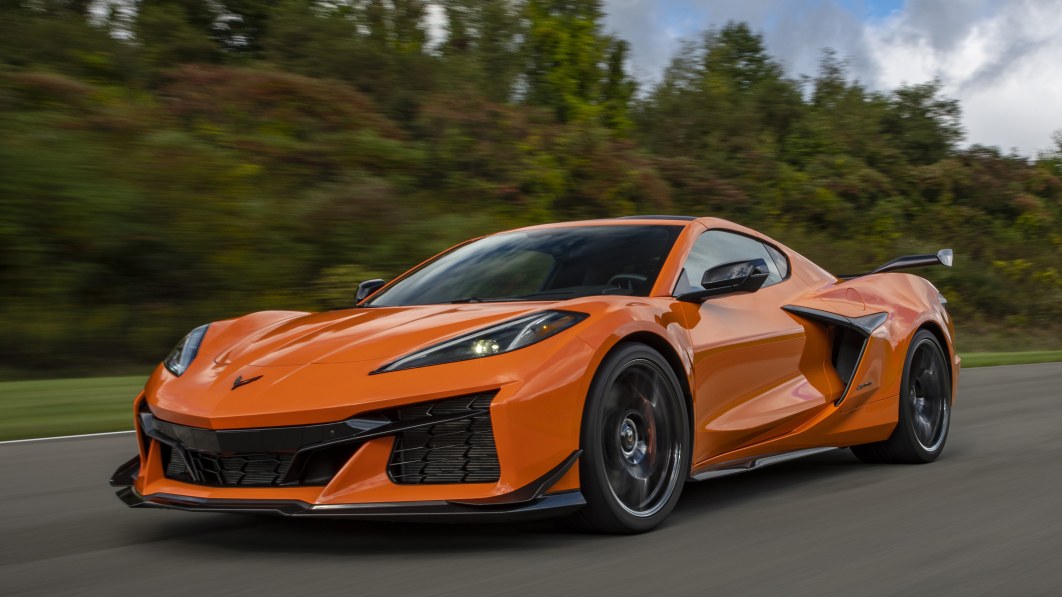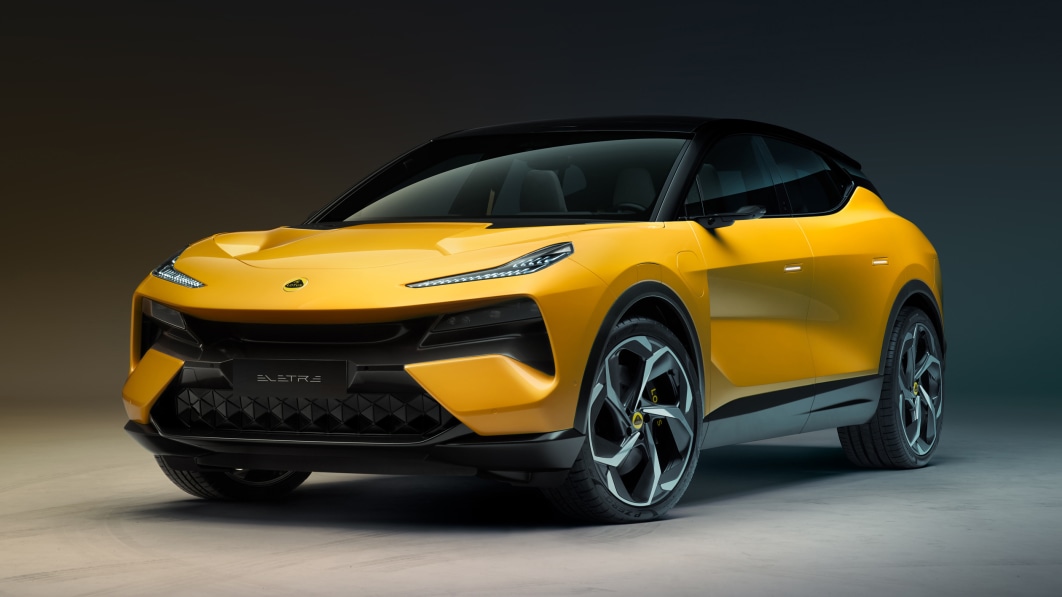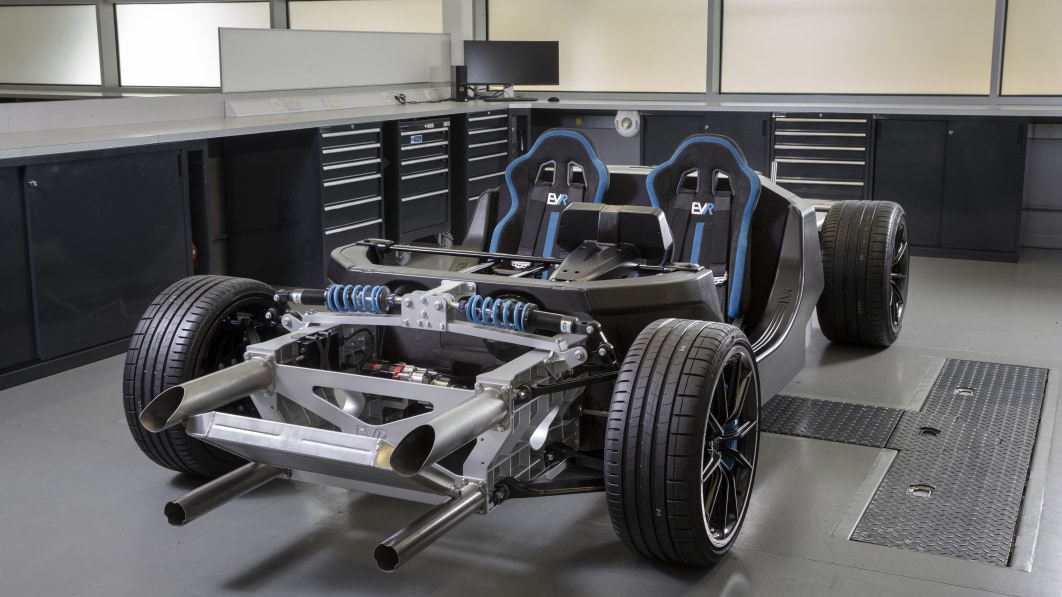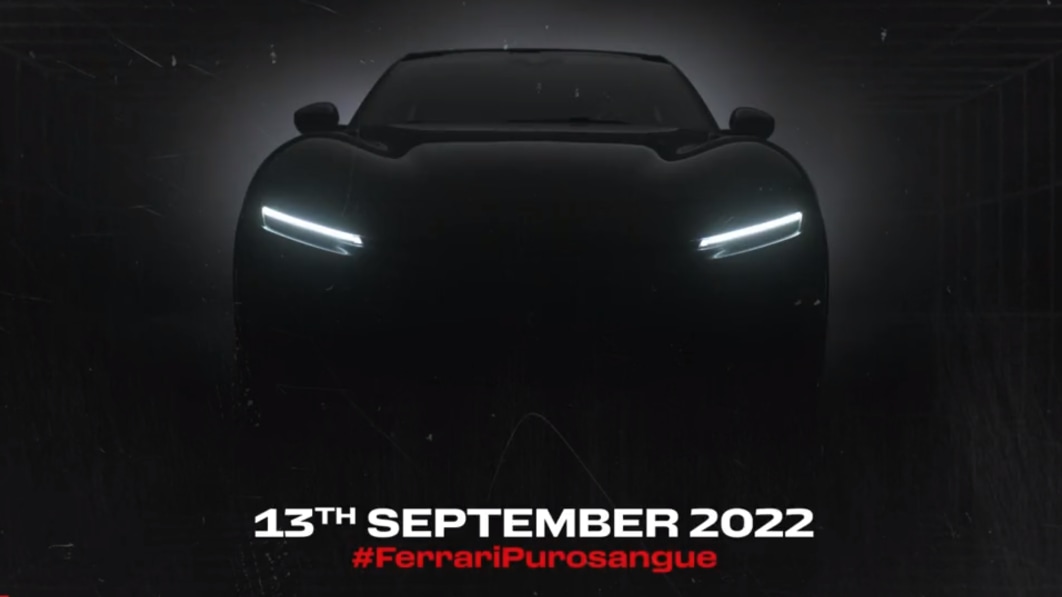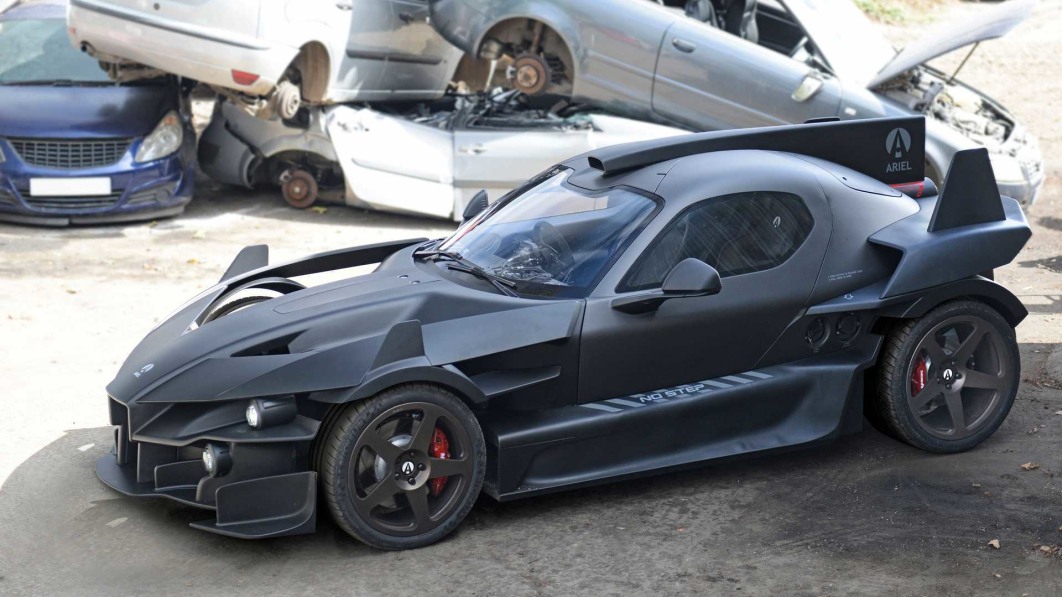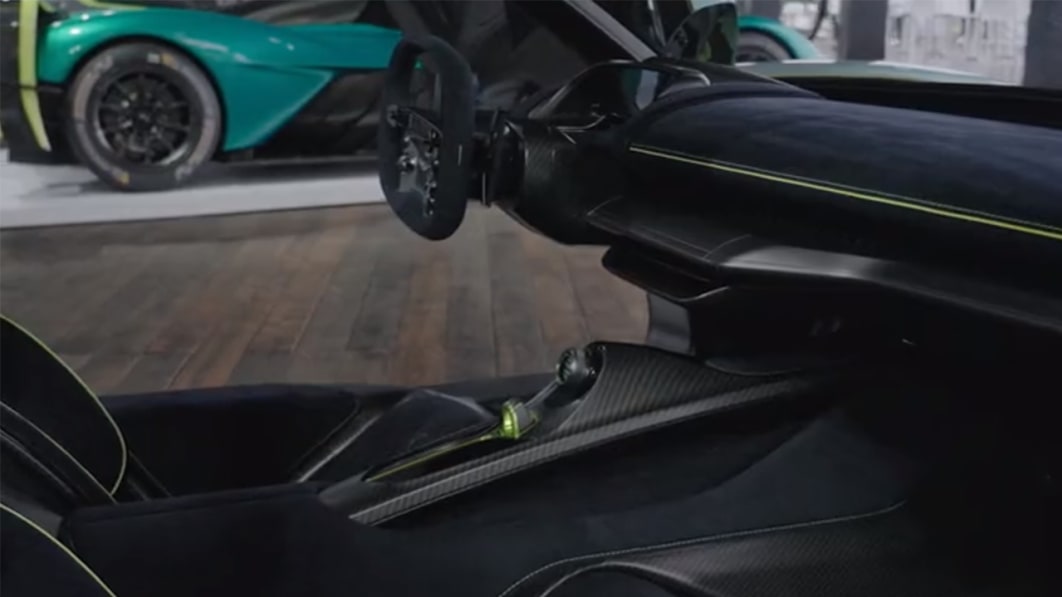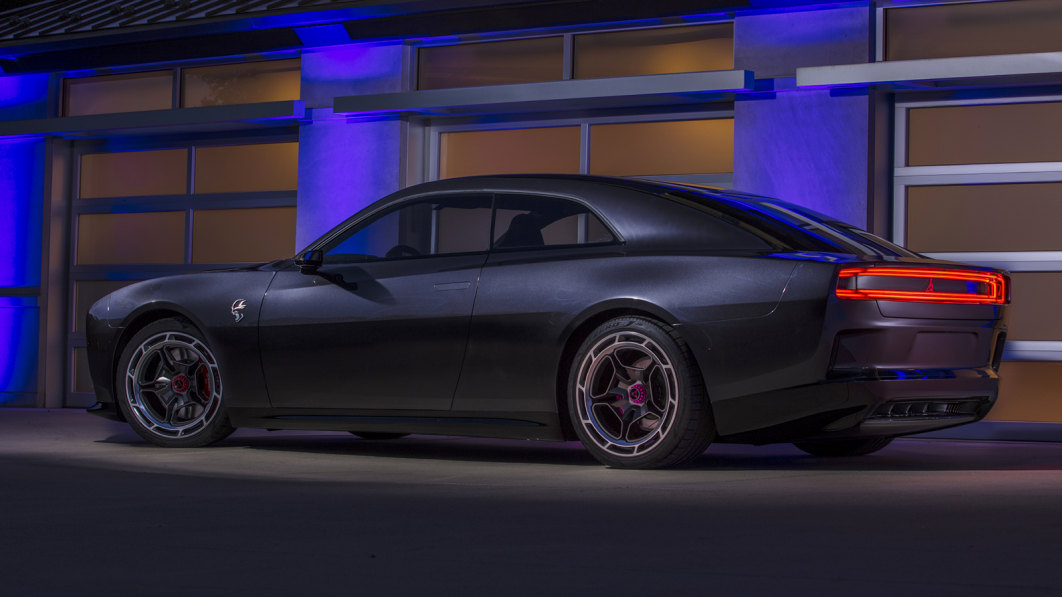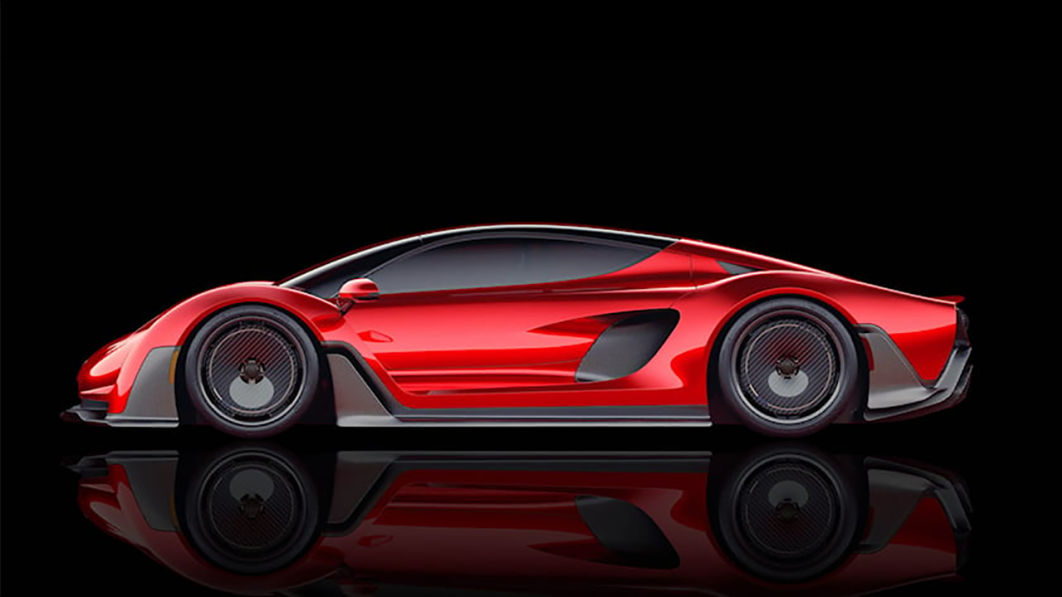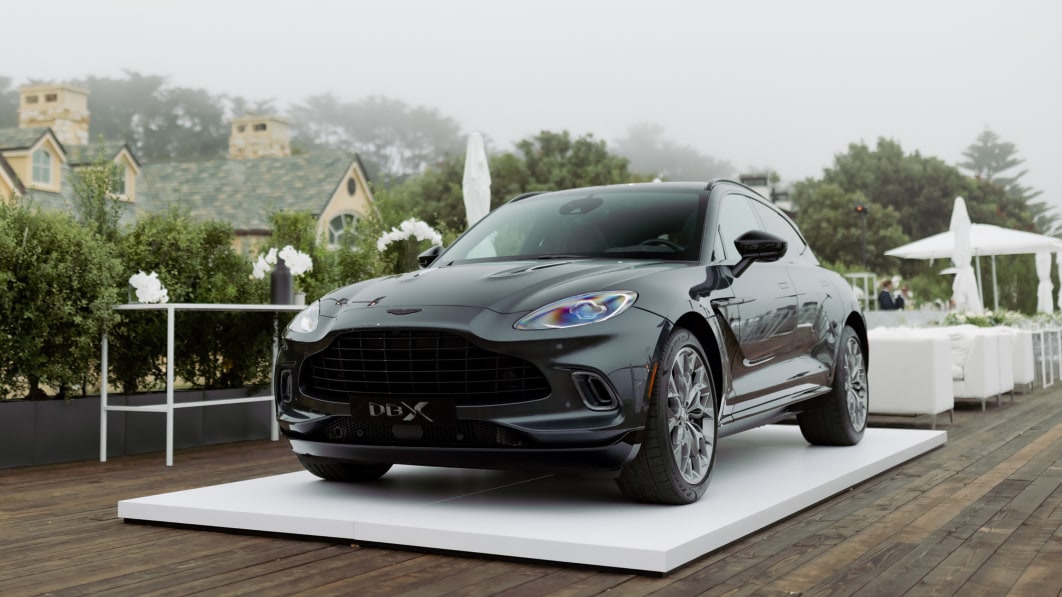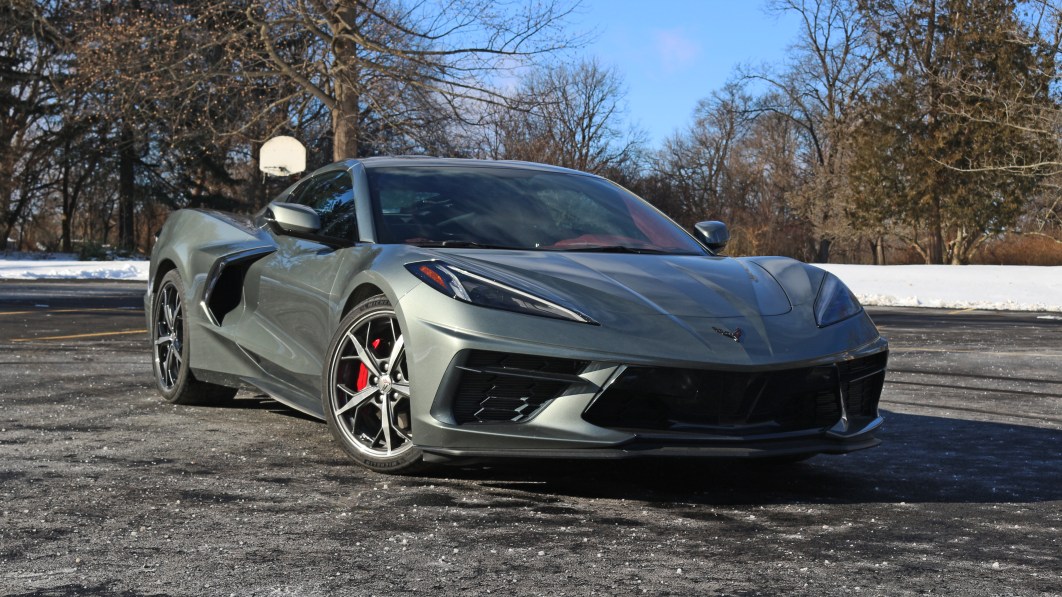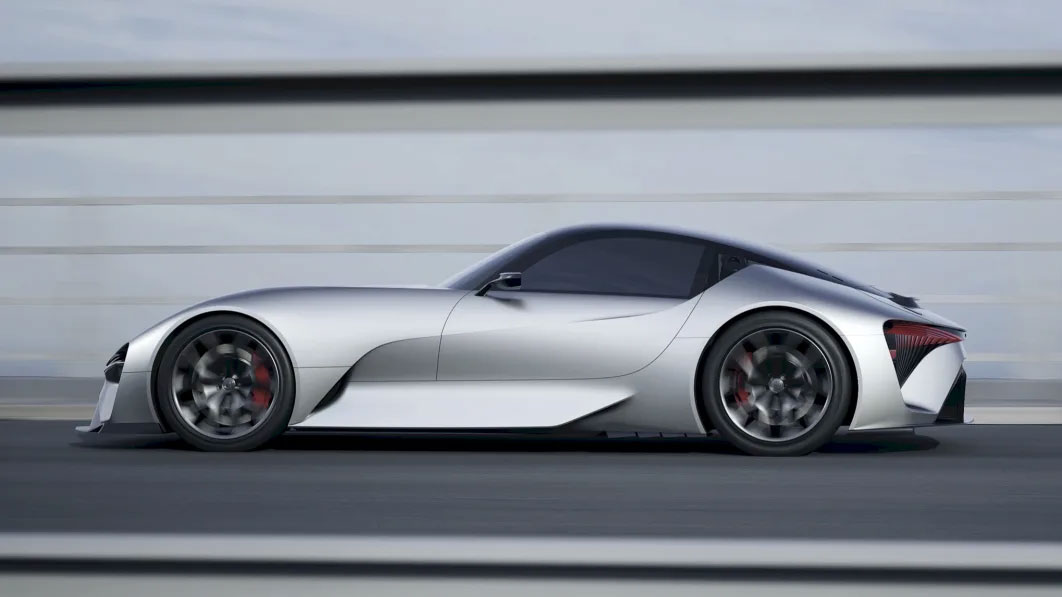Likely Chevrolet Corvette ZR1 prototypes spotted in Colorado
Chevrolet is engineering its next hot Corvette variant, the process far enough along to get prototypes out on the roads. In May, spy shooters caught a gaggle of Corvettes in heavy camo cruising around Detroit with an escort including a Corvette Z06 convertible, a Corvette E-Ray, and a Porsche 911 GT2 RS. At least one of the camouflaged cars could very well be the coming ZR1, said to be due next year as a 2025 offering. Now YouTube channel Frim Autos has caught another group of Corvettes testing in Golden, Colorado. The same school of cars got caught at a different location in Colorado a few days earlier. The E-Ray and the 911 GT2 RS didn’t make the trip out west, but there was another Z06 among the field.
To recap, the ZR1 is basically a twin-turbo version of the naturally aspirated Z06. Instead of a 5.5-liter V8 making 670 horsepower and 460 pound-feet of torque, the ZR1 would make up to 850 horsepower and up to 825 pound-feet of torque. The engine code for the ZR1 will be LT7, one up from the LT6 in the Z06.
Corvette watchers have wondered if the ZR1 will keep the Z06’s flat-plane crank or if Chevy will go to a cross-plane crank with the addition of turbos. Engineers driving the prototypes in Colorado pulled out of the hotel parking lot with barely any throttle, so it’s impossible to detect the turbos much less the crank arrangement. What we tell from this video and the earlier photographs is that something interesting is happening in the frunk area. The vinyl camo on one of the ZR1s in the photos couldn’t hide Y-shaped lines below, while another prototype wore a raised flat panel over the frunk. The three prototypes in Colorado got the raised panel, but it’s affixed to the adjacent camo panels differently.
One school of thought believes whatever’s happening at the front could have to do with active aero devices. Another school of thought suspects the ZR1 could get an electric motor in front like the E-Ray and be all-wheel drive. The non-believers think Chevy is withholding active aero for the hybrid AWD Zora flagship, and that the E-Ray and Zora will be the two AWD Corvettes in the range.
Both spy sightings have shown the purported ZR1 wearing the cow-catcher front splitter and stepped rear wing from the Z07 package available for the Z06. The ZR1 will be available without those, two of the Colorado cars featuring a tamer front and and a low spoiler on the decklid.
Related Video

